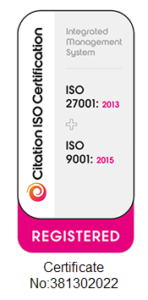The Do’s and Don’ts of Medical Education Delivery
“An ounce of prevention is worth a pound of cure.” – Benjamin Franklin
After the great feedback from my previous blog, I wanted to continue the discussion, this time with a focus on the very real challenges of medical information exchange.
As we know, medical education is a highly prescriptive, fire-walled area. It is about exchanging information, supported by key opinion leaders and the latest data, delivered in a balanced setting.
How companies engage with healthcare professionals (HCPs) is carefully managed and the agencies they work with are deeply committed to content and impartiality. They want to deliver a strong educational foundation for the HCPs they support.
Those of us working alongside these companies understand that relationship. We know the audience of HCPs is important to the client and that how the education is perceived by those HCPs matters. That is where trust comes in.
There is also another element that sets medical education meetings apart. Where an internal meeting brings together people who know each other – even loosely – typically the audience members in a medical education meeting don’t know one another. The format and interaction, therefore, is more formal and rigorous. And, because it is about clinical education, the company must have a platform for scientific exchange.
Keeping the session on track
The specific requirements for medical education mean that if the meeting is not run properly, things can go badly awry. That is where having an experienced audience engagement expert on hand to keep the session on track is paramount.
For example, a company is running a 1½ hour medical symposium that has run over. In the rush to finish, the Chair forgets to show the final slide which summarises the session and states ‘Please remember to complete your evaluation form’. As a result, delegates leave without completing their evaluation form. That session is considered a failure. This can and does happen. The Q&A can run over or the presentations may take longer than had been anticipated, and suddenly the final required element is overlooked.
A good audience engagement expert can prevent this from happening. I would argue the reason such problems arise is that most companies in the audience engagement space are either one-size-fits-all type organisations or slick, highly professional companies with a lot of clients, but mostly in the financial space and with very little pharmaceutical expertise.
Our team, however, has a strong pharmaceutical background and has built a relationship with the industry.
We have developed solutions and strategies to prevent problems such as the incomplete session from happening, and we have the experience and industry knowledge to intervene when needed.
One way that pharmaceutical companies try to prevent problems from arising is to make sure the engagement aspect is discussed at the start when the Chair introduces the session. They might share a slide on how to engage, but the problem is sometimes a third of the room might not turn up until after the first presenter has begun speaking.
We take a different approach. As a team, we ask questions that the client hasn’t thought about asking, and that comes from experience and knowledge of best practice. We put in place simple strategies that remove the element of risk.
For example, as people walk into a meeting or enter a virtual session, we make sure that the URL for audience engagement is on the holding slide that is seen by every delegate. In this way, people immediately see that they need to fill in an evaluation form. We work with the speakers and the medical communications agency to ensure there is continuous engagement and that delegates are interacting throughout the session.
In the weeks before the meeting, we work with the client to help them prepare and alert them to potential pitfalls that we have learned through our years of experience. During the meeting we are making sure the session runs smoothly and that the checklist of must-do activities is followed through.
It is a bit like being an experienced pilot. Crisis situations rarely arise, but when they do, the pilot stays calm and steers the plane to safety.
So, when those situations arise where the speaker forgets to put up that crucial last slide, we are there to make sure the meeting fulfils its requirements, that the evaluation forms are completed, that the audience is engaged and that the company can demonstrate an exchange of clinical information in keeping with the requirements. Ultimately, it is our job to keep our clients safe.
If you want to know more, have a discussion, or to receive case studies please get in touch with me.
Pedro Malha is Commercial Director at Open Audience, an audience engagement consultancy that specialises in making life sciences meetings more engaging with more positive, successful outcomes – whether in-person or in the virtual space. The Open Audience team helps to strategise and prepare pre- and post-meeting as well as providing real-time support and guidance during the meeting. Open Audience also offers customisable, multilingual engagement platforms that include interactive polling, surveys, and ideas exchange.

